Junkyard Gem: 1993 Plymouth Voyager SE AWD

Under Lee Iacocca’s leadership, Chrysler printed bales of money by designing a small, front-wheel-drive van based on the versatile K platform. Chrysler didn’t invent the minivan, of course, but those first 1984 Dodge Caravans and Plymouth Voyagers instantly put small vans square in the middle of the American vehicle mainstream (and began the long downward spiral of the station wagon here). For the 1991 model year, the second generation of Chrysler minivans hit our roads, and they were bigger, better-appointed and available with all-wheel-drive. Here’s one of those early second-gen vans, found in a Denver-area boneyard a few months back.
The 1984 Voyager was a genuine minivan, scaling in at a mere 2,984 pounds (about the same as the current Toyota Corolla). The wheelbases of the second-generation Voyager and Grand Voyager grew just a fraction of an inch longer, but the vans themselves got longer and heavier anyway. The curb weight of today’s Junkyard Gem was 4,008 pounds.

By 1993, minivans were under sales assault by a new crop of SUVs, particularly the Ford Explorer (which debuted for the 1991 model year) and Chrysler’s own Jeep Grand Cherokee (which first appeared as a 1993 model). Chrysler’s XJ Cherokee had been siphoning away minivan sales since Day One, having first hit Jeep showrooms at the same time as the first Voyagers and Caravans went on sale.
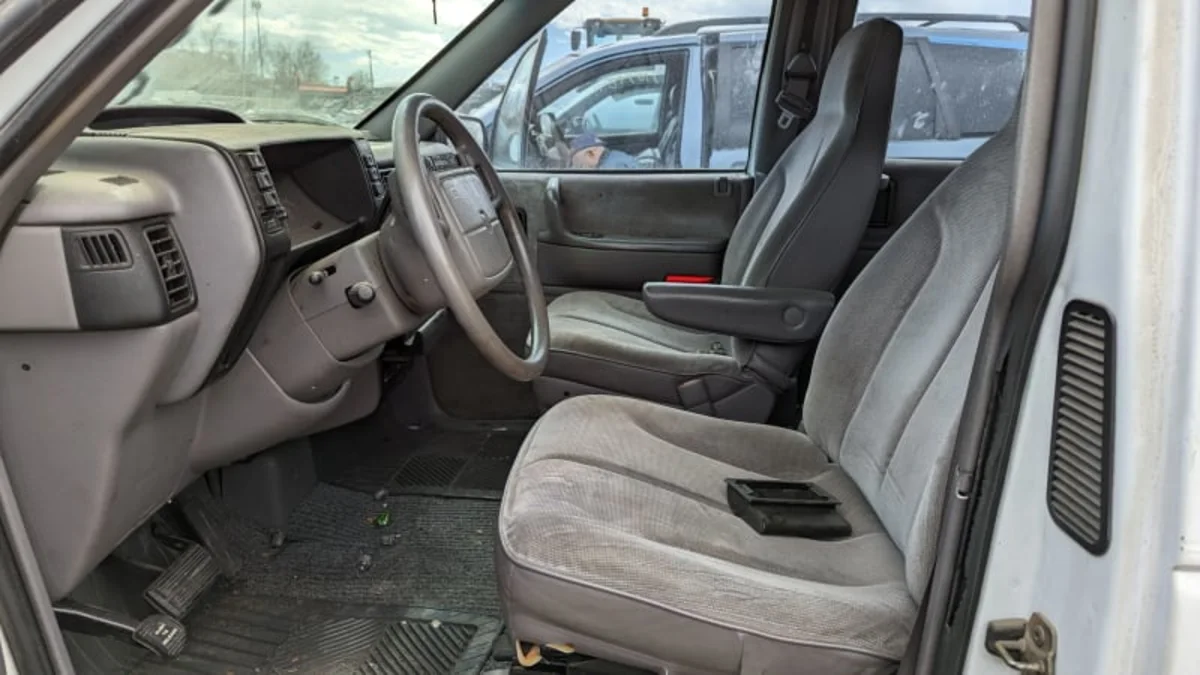
Still, the 1993 Caravan/Grand Caravan, Voyager/Grand Voyager and Town & Country obliterated those trucks when it came to usable interior space, safety, ride comfort and fuel economy.
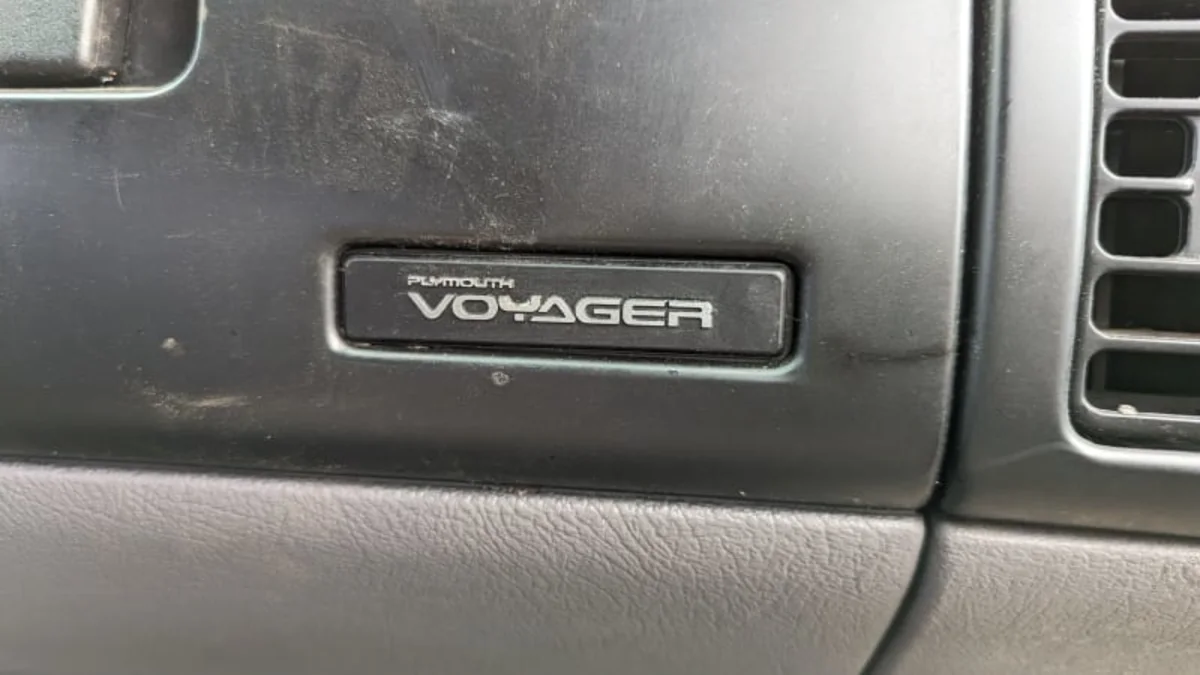
Plymouth used the Voyager name on rebadged Dodge Sportsman full-size vans from the 1974 through 1983 model years, during which time Chrysler attempted to sell their big fuel-swilling passenger vans as sensible station wagons.
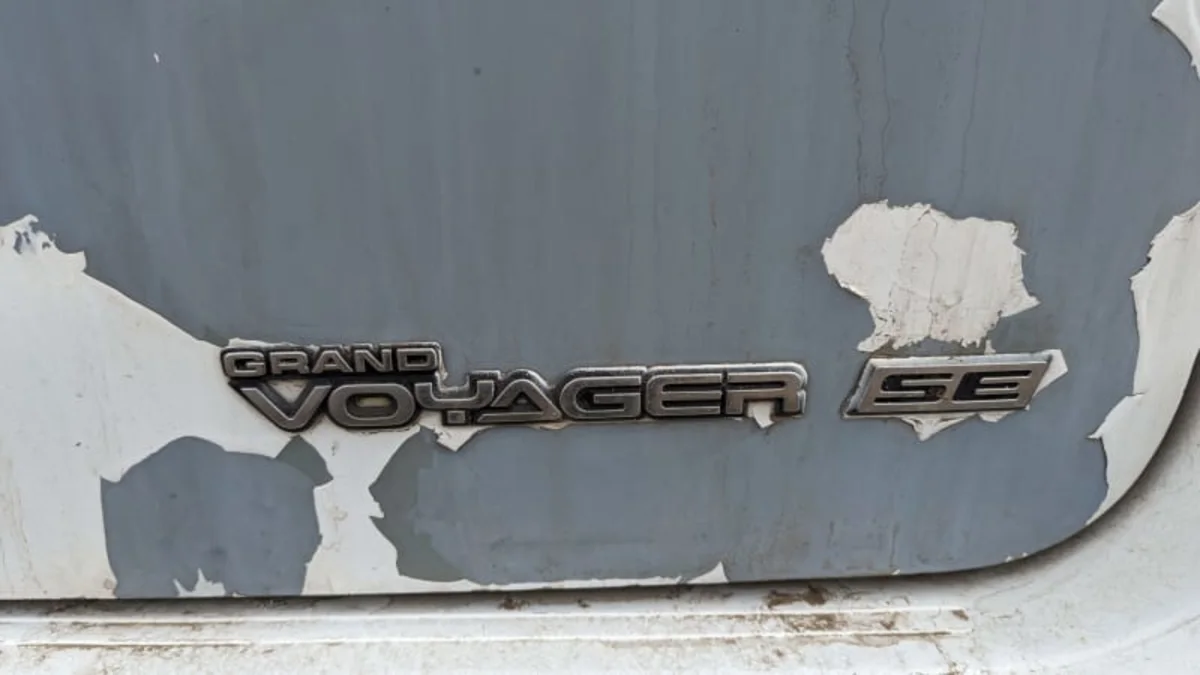
The Grand Voyager had a wheelbase stretch of just over seven inches versus that of the regular Voyager; the SE was the lower of the two trim levels available for the AWD-equipped version in 1993.
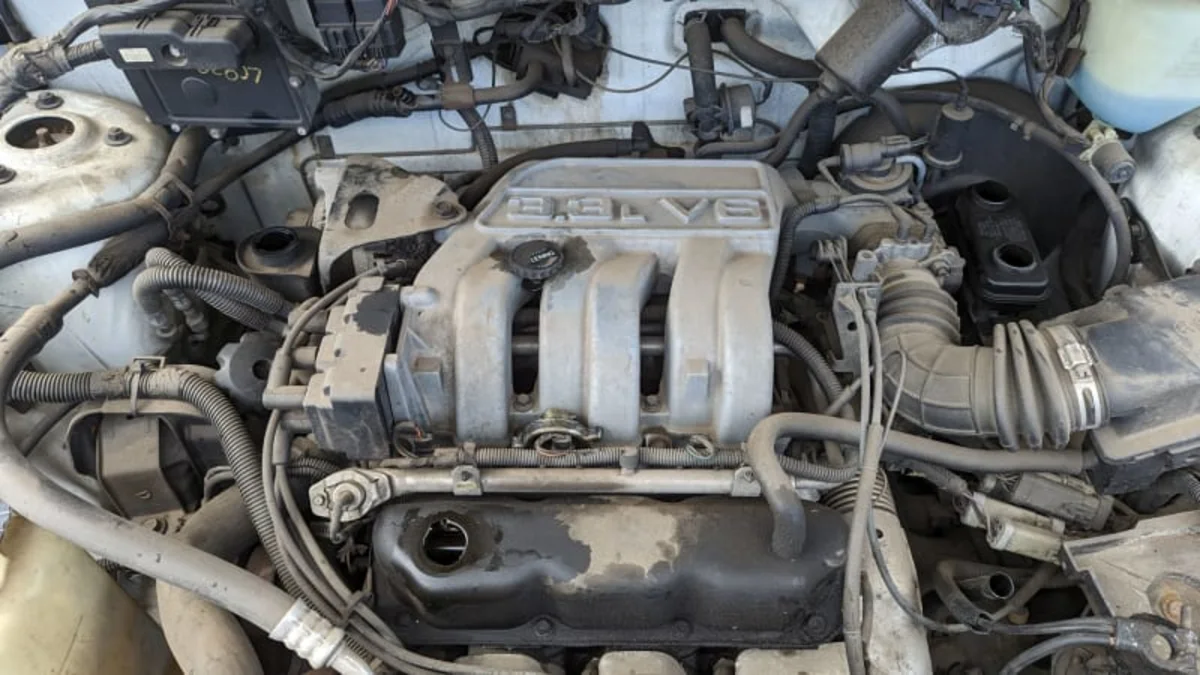
In 1993, base-grade front-wheel-drive Voyagers had 2.5-liter Chrysler four-cylinder engines as standard equipment, while front-wheel-drive Grand Voyagers got Mitsubishi 6G72 V6 engines. If you bought a new all-wheel-drive Grand Voyager that year, your van had this Chrysler 3.3-liter pushrod V6, rated at 150 horsepower and 180 pound-feet. Sadly, Chrysler stopped installing turbocharged 2.2 engines in their minivans after 1990.
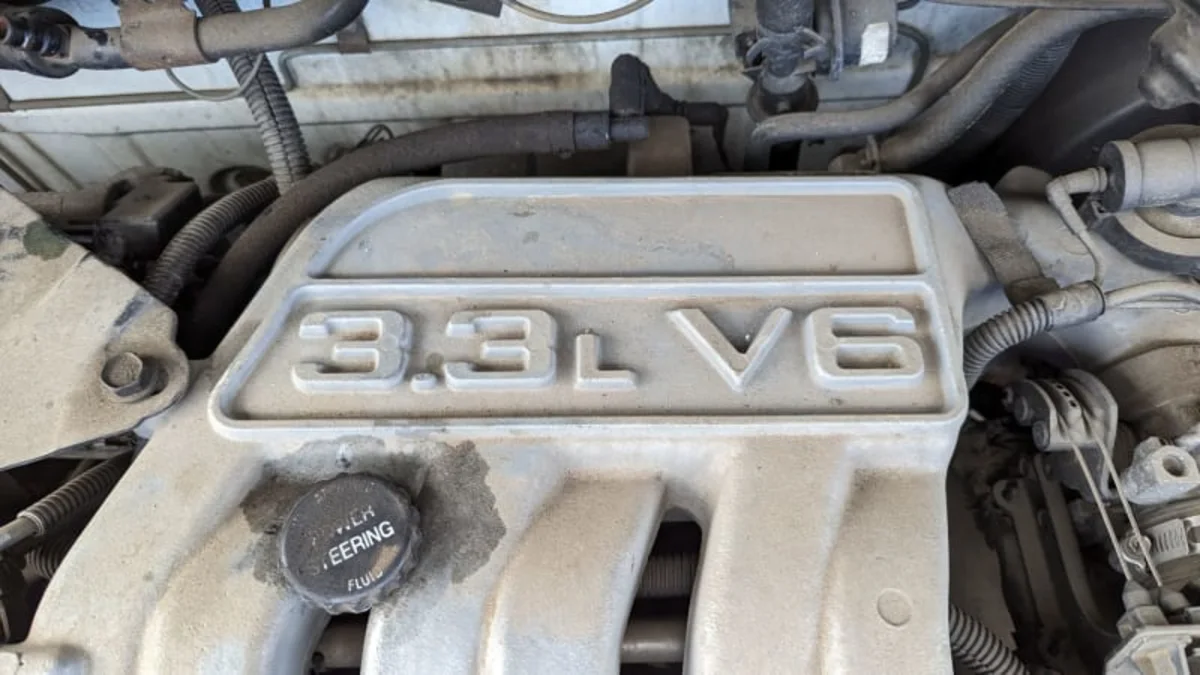
While five-speed manual transmissions were available on four-cylinder Caravans and Voyagers all the way through 1995, the six-banger Chrysler minivans all had mandatory automatics.
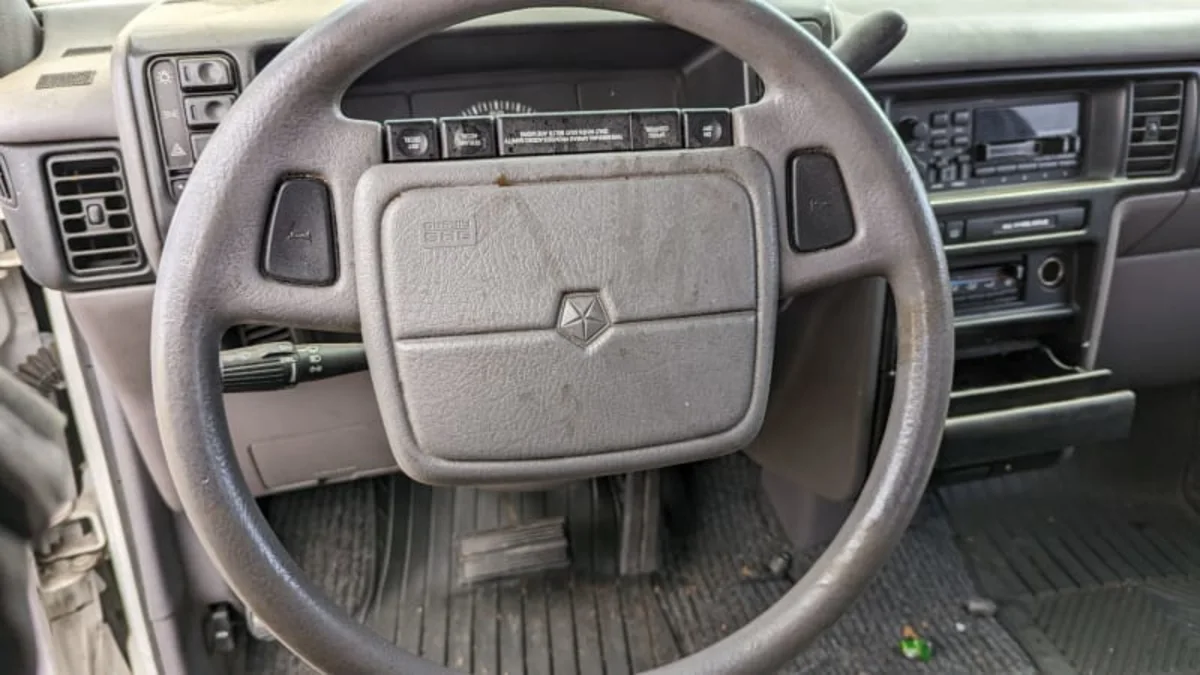
Chrysler was a major airbag innovator, being among the earliest manufacturers to install this lifesaving feature as standard equipment. A driver’s-side airbag was included with every Chrysler minivan starting with the 1991 model year.
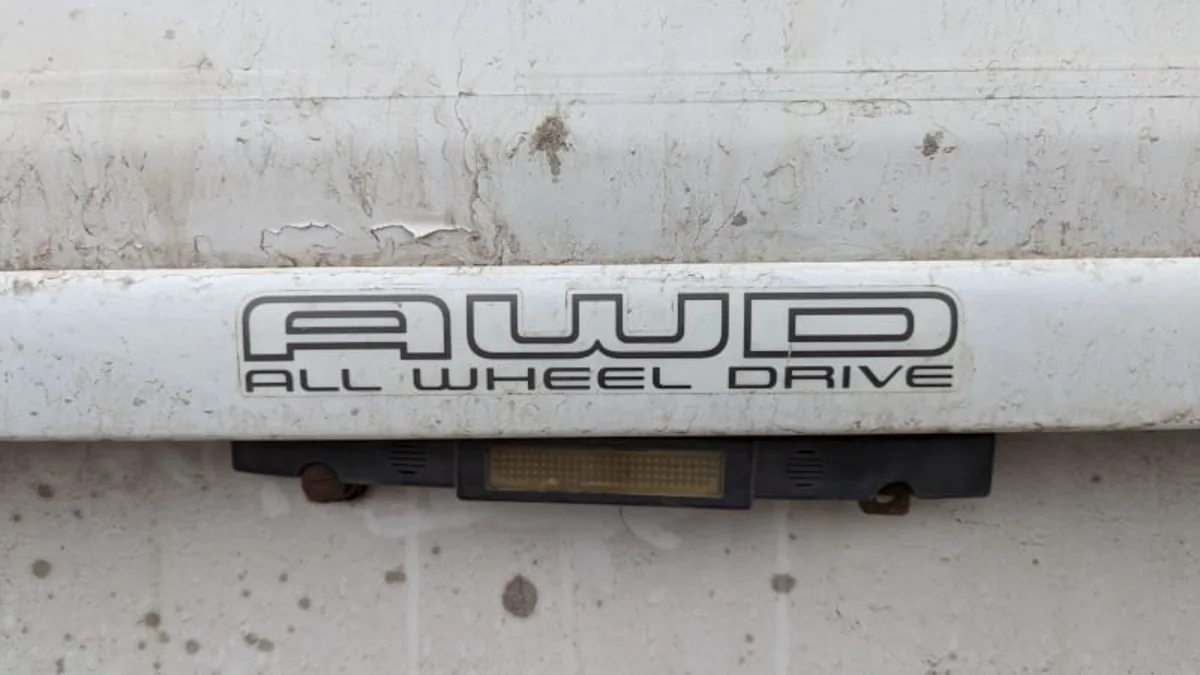
We take all-wheel-drive for granted today, but even Subaru was still selling four-wheel-drive cars (in which the driver had to select the drive mode manually) in 1993.
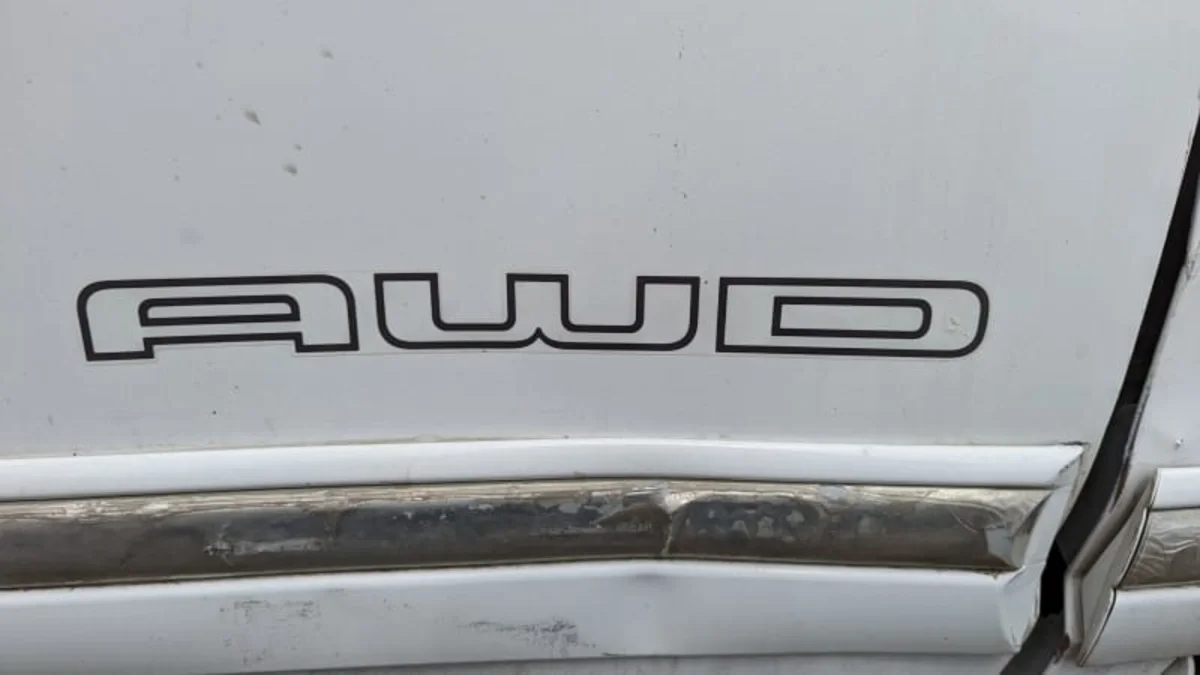
There are big AWD badges all over this van, which makes sense considering that Chrysler was vying for sales with other all-wheel-drive minivans (such as the Toyota Previa All-Trac).
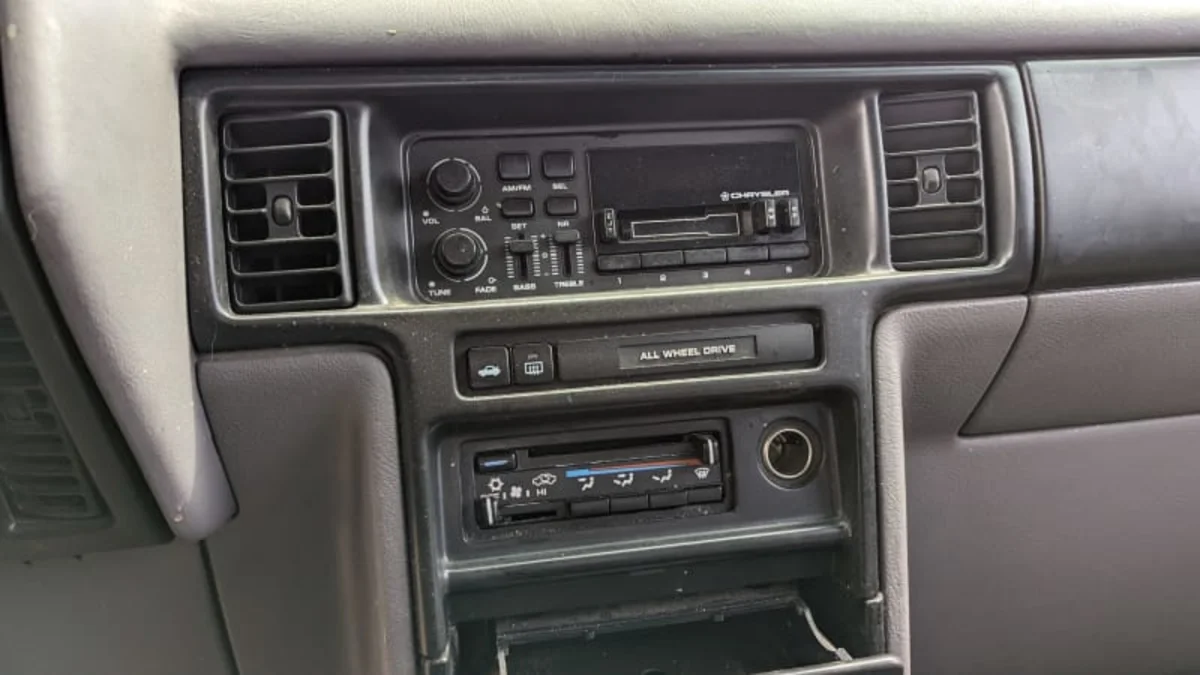
The MSRP was $20,035, or about $42,622 in 2023 dollars. The air conditioning was standard equipment in the Grand Caravan SE AWD, but this AM/FM/cassette radio added $165 ($351 today) to the cost.

Well over a quarter-million miles were on the odometer when this van’s driving career came to an abrupt end.

The airbag didn’t deploy when the crash happened, so either its system malfunctioned or this van got smashed while parked.
Come to the Minivan Store!
The (Canadian) family that drives a Chrysler minivan together, stays together.
Here we can see the first-generation Chrysler minivan balloon into the second-generation version. The evolution of the minivan is now complete.







